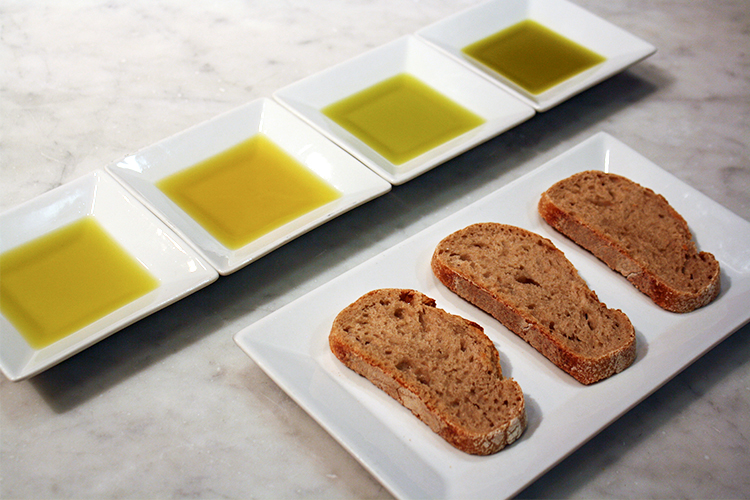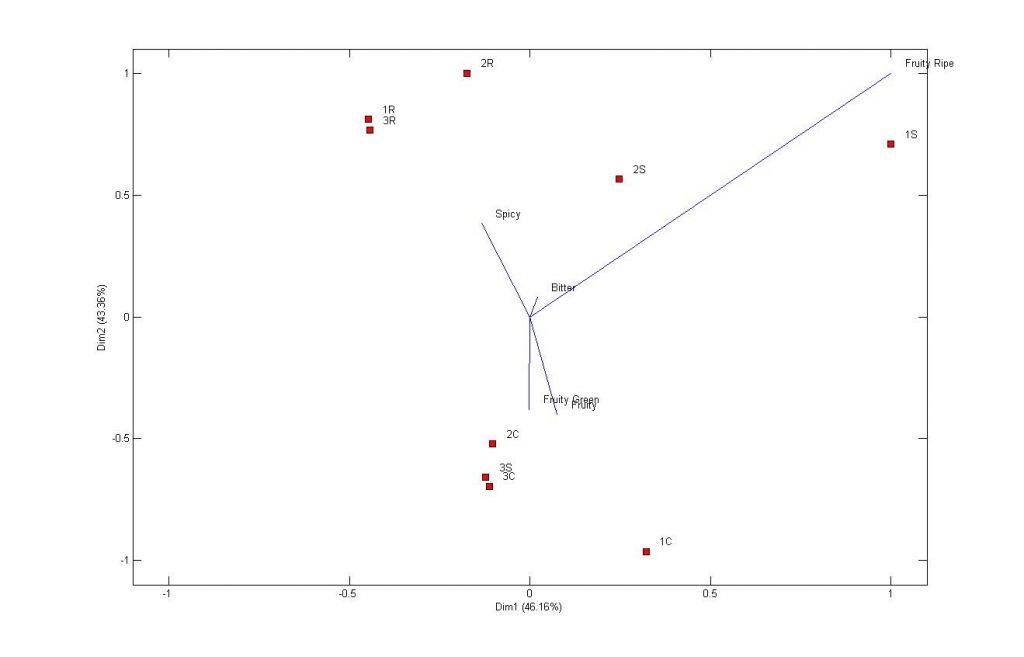By Amanda Neris dos Santos and Camila Argenta Fante
Music can interfere with sensory perceptions in general, but how can these interactions reflect the perception of the intensity of attributes in a sensory evaluation of olive oil? Would there be a song or a musical genre that would highlight specific attributes, more easily by the olive oil consumer? Silence and an inert environment are the prerogatives of a traditional sensory analysis. However, environmental changes are studied in order to analyze and evidence the behavior of a panelist in the face of these changes.
Thus, this study aimed to analyze the behavior of panelists trained in a sensory analysis of extra virgin olive oil with environmental noise interference.
10 trained panelists evaluated three samples of extra virgin olive oil of the Grapollo variety grown in Serra da Mantiqueira, Brazil, in three sections, with an interval of seven days between each section.

The samples were presented in a monadic form, following the requirements of the protocol COI/T.20/DOC.No15/rev102008 with the sensory profile assessment form and another form, which requested a holistic assessment of the sample by means of a note, represented by a three-digit number (from 100 to 999).
The first section was carried out without altering the sound (Silence), the second section, called Rock, was carried out with the environmental change due to the sound interference of the instrumental version of the song “Master of Puppets”, by the group Metallica and, the third section was called Classical, and had the song “Nocturne op.9 No.2”, by Chopin, as an environmental alteration.
In the 3 sections, throughout the analysis, the laboratory temperature remained at 21 ºC (± 1 ºC) and the white led light remained on in the cabins. In the sections with environmental changes, the songs were performed on the same equipment and volume. The responses of the sensory profile were analyzed by correspondence analysis (AC), and the notes that evaluated the samples were plotted by the median and analyzed by the Friedman test (p> 0.05).

The results of the correspondence analysis (CA) addressed the results of the official evaluation sheet of the sensory profile, and the samples analyzed in the “Silence” and “Classical” environments showed similarity when observed by dimension 1, corresponding to the descriptors “Fruity”, “Fruity Green” and “Bitter”, with the exception of sample 1, assessed in the Silence environment. The samples from the “Rock” environment formed a distinct group in dimension 2, and had a vectorial direction to the term “Spicy”.

When the panelist was asked to evaluate each sample taking into account a holistic perception, the scores of samples 1, 2 and 3 in the three environments analyzed showed greater similarity to the environment. When we observe the three evaluations of the same sample, it is possible to verify that the lowest values were attributed when the analysis was performed in the Rock environment.
Thus, the results show the possibility of altering the perception of the intensity of an attribute by sound interference, since the same sample, analyzed by the same panelist in different environments, corresponded to the environment and not the sample.

Amanda Neris dos Santos
Food technician, Food engineer, Master in food sciences at the Federal University of Minas Gerais (UFMG), and PhD student in food sciences at the same university. Work and research on food technology, alteration of food processes, and sensory analysis since 2005.
Lattes: http://lattes.cnpq.br/1413393271728078

